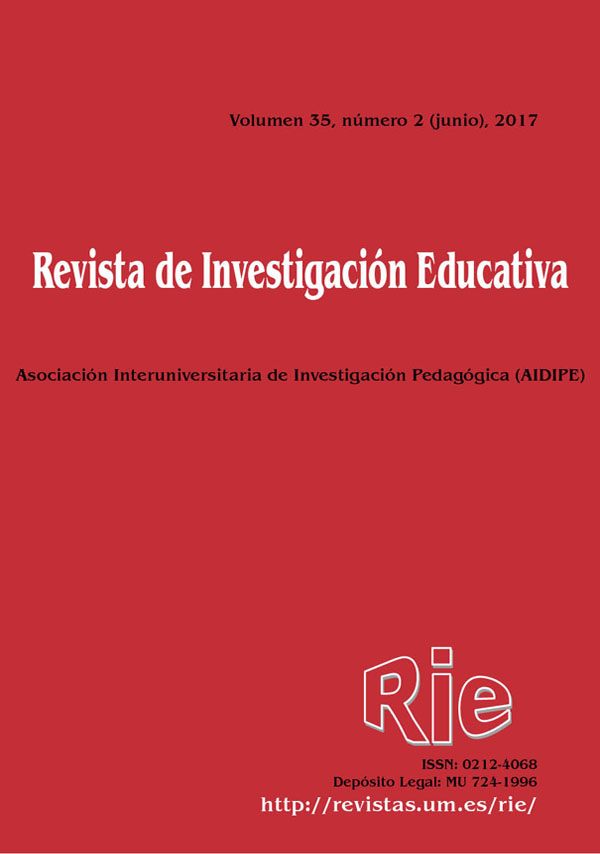Contingent authority and youth influence: When youth councils can wield influence in public institutions
Resumen
Studies of youth public participation have dealt with varied conceptions of citizenship that emerge from literatures on human rights, civic engagement, youth development, and youth organizing and activism. Where those conceptions rely on developmental logics that limit or exclude youth participation, young people’s attempts to gain authority reveal concurrent ways they navigate these multiple conceptions of participation. Drawing on an 18-month ethnographic study, the analysis presented here focuses on a specific venue for youth participation: a student advisory board. Data includes participant observation, interviews, and artifacts including resolutions and emails. Twenty-one of 27 students, representing roughly 15 high schools in their school district, participated in the study. When students attended to paperwork like bylaws and the state education code, they gained access to contingent authority, a limited but influential form of Weberian authority. Key implications of the study indicate that while youth advisory councils can reliably produce exclusion on developmental grounds, they can also provide the parameters for establishing contingent authority. Paperwork is a key to accessing this form of bureaucratic authority, but exercising it requires sustained, public practice. This article contributes to literatures on youth studies, public participation and more broadly to sociology of education.
Descargas
Citas
Booker, A. (2010). Framing youth civic participation: Technical, pragmatic, and political learning. In L. Lin, H. Varenne, & E. W. Gordon (Eds.), Educating comprehensively: Varieties of educational experiences (pp. 209-231). Lewiston, NY: Edwin Mellen Press.
Booker, A. (2016). Ethical commitments in community-based research with youth. Mind, Culture, and Activity: An International Journal, 23(1), 15-27.
Bennett, W. L. (2008). Changing citizenship in the digital age. In W. L. Bennett (Ed.), Civic Life Online: Learning How Digital Media Can Engage Youth (pp.1-24). MacArthur Foundation Series on Digital Media and Learning. Cambridge: The MIT Press.
Bessant, J. (2004). Mixed messages: Youth participation and democratic practice. Australian Journal of Political Science, 39(2), 397-404.
Camino, L., & Zeldin, S. (2002). From periphery to center: Pathways for youth civic engagement in the day-to-day life of communities. Applied Developmental Science, 6(4), 213-220.
Du Gay, P. , Hall, S., Janes, L., Mackay, H., & Negus, K. (1997). Doing cultural studies: The story of the Sony Walkman. London: SAGE Publications.
Fleming, J. (2013). Young people’s participation — Where next?. Children & Society, 27(6), 484-495.
Ginwright, S., Noguera, P., & Cammarota, J (Eds.). (2006). Beyond resistance: Youth activism and community change. New York: Routledge.
Hart, R. A. (1992). Children’s participation: From tokenism to citizenship. New York: UNICEF.
Kahne, J., & Middaugh, E. (2008). High quality civics education: What is it and who gets it?. Social Education, 72(1), 34-39.
Kirshner, B. (2015). Youth activism in an era of education inequality. New York: NYU Press. Matthews, H., Limb, M., & Taylor, M. (1998). Young people’s participation and representation in society. Geoforum, 30(2), 135-144.
Matthews, H., & Limb, M. (2003). Another white elephant? Youth councils as democratic structures. Space and Polity, 7(2), 173-192.
Mukerji, C. (2011). Jurisdiction, inscription, and state formation: Administrative modernism and knowledge regimes. Theory and Society, 40(3), 223-245.
National Center for Education Statistics. (2011). The nation’s report card: Civics 2010 (NCES 2011–466). Washington, DC: Institute of Education Sciences, U.S. Dept. of Education.
Rancière, J. (2010). Dissensus: On politics and aesthetics. London: Continuum.
Rosaldo, R. (1994). Cultural citizenship and educational democracy. Cultural Anthropology, 9(3), 402-411.
Smith, N., Lister, R., Middleton, S., & Cox, L. (2005). Young people as real citizens: Towards and inclusionary understanding of citizenship. Journal of Youth Studies, 8(4), 425-443.
Snow, D. A., & Benford, R. D. (1988). Ideology, frame resonance, and participant mobilization. International Social Movement Research, 1, 197-217.
Snow, D. A., Rochford, Jr., E. B., Worden, S. K., & Benford, R. D. (1997). Frame alig- nment processes, micromobilization, and movement participation. In D. McAdam & D. A. Snow (Eds.), Social movements: Readings on their emergence, mobilization, and dynamics (pp. 235-251). Los Angeles: Roxbury Publishing Company.
Soep, E. (2014). Participatory politics: Next generation tactics to remake public spheres. MacArthur Foundation Reports on Digital Media and Learning. Cambridge: The MIT Press.
Taft, J. K., & Gordon, H. R. (2013). Youth activists, youth councils, and constrained democracy. Education, Citizenship and Social Justice, 8(1), 87-100.
Veerman, P. E. (1992). The rights of the child and the changing image of childhood. The Netherlands: Martinus Nijhoff Publishers.
Weber, M. (1978). Economy and society: An outline of interpretive sociology. Berkeley: UC Press.
Westheimer, J., & Kahne, J. (2004). What kind of citizen? The politics of educating for democracy. American Educational Research Journal, 41(2), 237-269.
Las obras que se publican en esta revista están sujetas a los siguientes términos:
1. El Servicio de Publicaciones de la Universidad de Murcia (la editorial) conserva los derechos patrimoniales (copyright) de las obras publicadas, y favorece y permite la reutilización de las mismas bajo la licencia de uso indicada en el punto 2.
2. Las obras se publican en la edición electrónica de la revista bajo una licencia Creative Commons Reconocimiento-NoComercial-SinObraDerivada 3.0 España (texto legal). Se pueden copiar, usar, difundir, transmitir y exponer públicamente, siempre que: i) se cite la autoría y la fuente original de su publicación (revista, editorial y URL de la obra); ii) no se usen para fines comerciales; iii) se mencione la existencia y especificaciones de esta licencia de uso.
3. Condiciones de auto-archivo. Se permite y se anima a los autores a difundir electrónicamente las versiones pre-print (versión antes de ser evaluada) y/o post-print (versión evaluada y aceptada para su publicación) de sus obras antes de su publicación, ya que favorece su circulación y difusión más temprana y con ello un posible aumento en su citación y alcance entre la comunidad académica.










